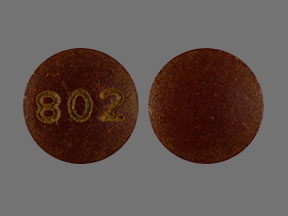
Phenazo Coupons & Savings Card – Discount Prices from $3.66
Brand for: Phenazopyridine
This medication is used to relieve symptoms caused by irritation of the urinary tract such as pain, burning, and the feeling of needing to urinate urgently or often. This drug does not treat the cause of the urinary irritation, but it can help relieve the symptoms while other treatments take effect. Phenazopyridine is a dye that works as a painkiller to soothe the lining of the urinary tract.
Our Phenazo coupons are free to use. You can print the coupon, email it to yourself, or receive the Phenazo coupon via text message. To get your free discount, show the pharmacist your Phenazo savings card which has the discounted coupon price. Use our filters below to edit the prescription box to match your needs. The Phenazo prices will update based on your prescription needs. Above our Phenazo coupons, you can change the location to see pharmacy prices in other areas. Our prescription discount card will update online with the specific pharmacy costs associated with your edits. Be sure to text, email, or print the Phenazo savings card code that you need after editing the prescription box and location field. Show the discount card to your pharmacist before paying.
My prescription
Edit
200MG, Phenazopyridine (6 Tablets)
Select pharmacy

CVS
$18.55
COUPON PRICE
Walmart
$3.66
COUPON PRICE
Walgreens
$4.71
COUPON PRICE
Albertsons
$9.00
COUPON PRICEPhenazo savings card
Show this card to your pharmacist
Walmart
$3.66
BIN
ID
PCN
GRP
019876
LHD103AB71
CHIPPO
LHX
Powered by
This medication is used to relieve symptoms caused by irritation of the urinary tract such as pain, burning, and the feeling of needing to urinate urgently or often. This drug does not treat the cause of the urinary irritation, but it can help relieve the symptoms while other treatments take effect. Phenazopyridine is a dye that works as a painkiller to soothe the lining of the urinary tract.
Our Phenazo coupons are free to use. You can print the coupon, email it to yourself, or receive the Phenazo coupon via text message. To get your free discount, show the pharmacist your Phenazo savings card which has the discounted coupon price. Use our filters below to edit the prescription box to match your needs. The Phenazo prices will update based on your prescription needs. Above our Phenazo coupons, you can change the location to see pharmacy prices in other areas. Our prescription discount card will update online with the specific pharmacy costs associated with your edits. Be sure to text, email, or print the Phenazo savings card code that you need after editing the prescription box and location field. Show the discount card to your pharmacist before paying.
Our Phenazo coupons are free to use. You can print the coupon, email it to yourself, or receive the Phenazo coupon via text message. To get your free discount, show the pharmacist your Phenazo savings card which has the discounted coupon price. Use our filters below to edit the prescription box to match your needs. The Phenazo prices will update based on your prescription needs. Above our Phenazo coupons, you can change the location to see pharmacy prices in other areas. Our prescription discount card will update online with the specific pharmacy costs associated with your edits. Be sure to text, email, or print the Phenazo savings card code that you need after editing the prescription box and location field. Show the discount card to your pharmacist before paying.
Phenazo FAQs
Using the SaveHealth discount card, what is the price of Phenazo without insurance?
Using the SaveHealth discount card, the price of Phenazo without insurance is $3.66.
What is the price of Phenazo at CVS?
The price of Phenazo at CVS is $18.55.
What is the price of Phenazo at Walgreens?
The price of Phenazo at Walgreens is $4.71.
What is the price of Phenazo at Walmart?
The price of Phenazo at Walmart is $3.66.
